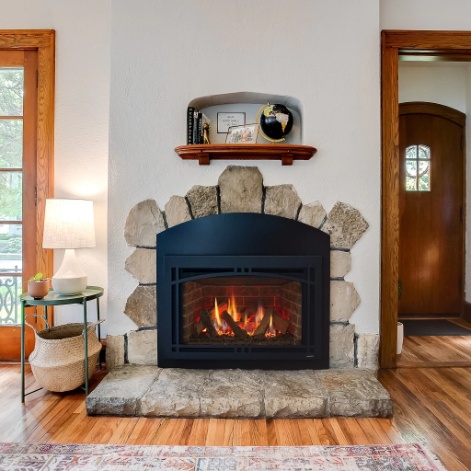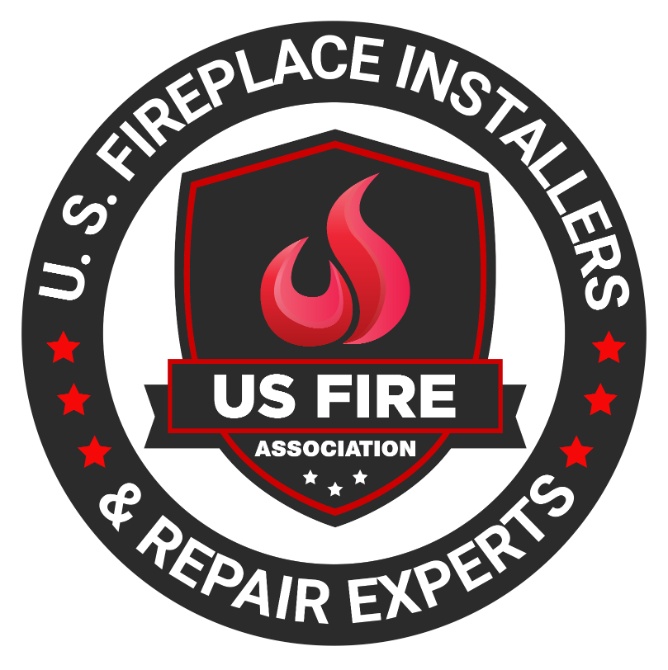Table of Contents
- 1 Why Do You Need to Properly Dispose of Fireplace Ashes?
- 2 What Is the Best Way to Dispose of Fireplace Ashes?
- 3 Where Is the Best Place to Dump Fireplace Ashes?
- 4 What Should You Avoid When Disposing of Fireplace Ashes?
- 5 What Are Some Creative Ways to Reuse Fireplace Ashes?
- 6 Frequently Asked Questions
Are you wondering what to do with the ashes left behind after enjoying a cozy fire in your fireplace? Properly disposing of fireplace ashes is essential for safety and environmental reasons.
In this article, we will explore the best ways to dispose of fireplace ashes, the necessary materials, safety precautions to take, and the best places to dump them.
We will discuss what to avoid when disposing of ashes and provide some creative ways to reuse them. Let’s get started!
Why Do You Need to Properly Dispose of Fireplace Ashes?
Properly disposing of fireplace ashes is crucial to prevent potential fire hazards and ensure the safety of your surroundings.
Improper disposal of ashes can lead to accidental fires, as they may still contain embers that can ignite if not properly handled.
By following safety measures such as allowing ashes to cool completely before disposal and using a metal container with a tight-fitting lid, you can significantly reduce the risk of fire incidents.
It is also important to keep ashes away from combustible materials and never dispose of them in plastic bags or cardboard boxes.
Taking these precautions not only protects your property but also helps in maintaining a fire-safe environment for everyone.
What Is the Best Way to Dispose of Fireplace Ashes?
The best way to dispose of fireplace ashes involves following specific safety precautions and utilizing proper disposal methods to minimize the risk of fire hazards.
When handling fireplace ashes, it is crucial to let them cool completely before attempting any disposal method.
This can prevent accidental fires from occurring due to residual heat.
It is recommended to place the cooled ashes in a metal container with a tight-fitting lid to further reduce the risk of potential flare-ups.
When selecting a location for ash disposal, opt for an area away from flammable materials such as dry leaves or woodpiles.
By taking these precautions and choosing the right disposal techniques, you can safely manage fireplace ashes and prevent fire incidents.
What Materials Do You Need?
When disposing of fireplace ashes, you may need outdoor space, a garden area, and a suitable container for storage and transportation.
Utilizing the right materials ensures a safe and efficient process.
A metal container with a tight-fitting lid is ideal for storing ashes due to its durability and safety features.
It is crucial to wait at least 24 hours after extinguishing the fire before transferring the ashes to the container to prevent any potential hazards.
Selecting a designated garden area away from flammable objects is essential for outdoor disposal.
Remember to always wear protective gloves and avoid windy conditions when handling ashes to prevent accidents and ensure a hassle-free cleanup.
What Safety Precautions Should You Take?
Taking necessary safety precautions when handling fireplace ashes is essential to prevent fire hazards and ensure proper disposal.
When handling fireplace ashes, always wait at least 24 hours before removing them from the fire to ensure they are fully extinguished.
Use a metal ash bucket with a tight-fitting lid to transport the ashes.
Keep the bucket away from any flammable materials and never dispose of ashes in a plastic or cardboard container.
It’s also important to wear gloves and a mask while handling ashes to protect your skin and respiratory system from irritation.
Store the ash bucket outside, away from your home and any structures until the ashes have cooled completely.
Where Is the Best Place to Dump Fireplace Ashes?
Determining the best location to dump fireplace ashes requires considering safety precautions and proper disposal methods to mitigate fire risks and environmental impact.
One recommended way to dispose of fireplace ashes safely is to allow them to cool completely before transferring them to a designated metal container with a tight-fitting lid.
Once the ashes are in the container, store it in a secure location away from flammable materials and structures.
Another option is to mix the ashes with water to extinguish any remaining embers before placing them in a non-combustible container.
It’s crucial to never dispose of ashes near dry vegetation or combustible materials to prevent accidental fires.
In the Garden
Dumping fireplace ashes in the garden can serve as a beneficial way to recycle nutrients back into the soil and enhance plant growth.
These ashes act as a natural fertilizer, enriching the soil with essential minerals like potassium and calcium.
As the ashes break down, they improve soil structure and pH levels, creating a more hospitable environment for plant roots.
The alkaline nature of wood ash can help neutralize acidic soils, balancing the pH and allowing plants to better absorb nutrients.
This process not only benefits the current plant life but also enhances the overall health of the garden ecosystem, contributing to sustainable gardening practices.
In the Trash
Disposing of fireplace ashes in the trash should be done following local municipal guidelines and waste disposal regulations to ensure proper and safe disposal.
Before disposing of the ashes, it is crucial to let them cool completely to prevent any potential fire hazards.
Once cooled, scoop the ashes into a metal container with a tight-fitting lid to contain any remaining embers.
Avoid using plastic bags or cardboard boxes, as these materials can pose a risk of igniting.
By following these simple steps, you not only adhere to waste management regulations but also contribute to maintaining a safe environment for waste collection workers and the community as a whole.
In the Compost Bin
Utilizing a compost bin for fireplace ashes can contribute to environmental sustainability by integrating ash nutrients into the composting process.
This practice not only helps in enriching the compost with essential minerals such as potassium and calcium but also aids in balancing the pH levels, creating a fertile soil amendment.
By diverting fireplace ashes from ending up in landfills, you are actively participating in efficient waste recycling, reducing the burden on waste management systems and limiting greenhouse gas emissions.
Incorporating fireplace ashes into composting can optimize the decomposition process, resulting in a nutrient-rich compost that enhances plant growth and soil health.
In the Garbage Disposal
Properly disposing of fireplace ashes in the garbage disposal system requires following waste management protocols and ensuring safe ash removal practices.
It is essential to let the ashes cool completely before attempting to dispose of them to prevent any risk of fire hazards.
Once the ashes have cooled down, carefully scoop them into a metal container designated specifically for ash disposal.
Avoid using plastic containers as hot ashes can melt or ignite them. Remember to tightly seal the container to prevent any ash particles from spilling out during transport.
When ready to dispose of the ashes, make sure to place the sealed container in the designated garbage disposal area mentioned by your local waste management authorities.
In the Landfill
Dumping fireplace ashes in a landfill necessitates adherence to waste treatment plant regulations and considerations for ash recycling programs to minimize environmental impact.
Improper disposal of ashes can lead to environmental contamination and potential health hazards.
Landfills are not always equipped to handle certain types of waste, such as ashes, as they can contain harmful chemicals and heavy metals that may leach into the soil and groundwater.
By following waste treatment plant regulations, individuals can ensure that the proper protocols are in place to mitigate these risks.
Participating in ash recycling programs can provide a more sustainable solution, allowing for the reuse of materials and reducing the overall burden on landfills.
What Should You Avoid When Disposing of Fireplace Ashes?
Certain practices should be avoided when disposing of fireplace ashes to prevent potential risks, especially when dealing with hot ashes.
It is crucial to always let the ashes cool completely before attempting to remove or dispose of them.
Using a metal container with a tight-fitting lid to store ashes temporarily can help prevent accidental fires.
Never dispose of ashes in a combustible container or near flammable materials.
It’s also important to keep children and pets away from the area where ashes are stored or being disposed of.
By following these precautions, the chances of accidental fires or burns can be greatly reduced.
Dumping in a Forest or Wooded Area
Dumping fireplace ashes in a forest or wooded area can pose a significant fire hazard, necessitating the implementation of preventive measures and safety protocols.
Forest fires can result from even the smallest embers in the ashes igniting dry vegetation.
To minimize the risk, ensure ashes are cold to the touch before disposal and never dump them directly onto the forest floor.
Utilizing designated fire pits for ash disposal or mixing the ashes with water can help extinguish any remaining heat.
Following these precautions not only protects the forest ecosystem but also prevents potential devastation that can arise from uncontrolled fires spreading through wooded areas.
Dumping in a Trash Can or Dumpster
Dumping fireplace ashes in a regular trash can or dumpster may lead to refuse residue buildup and pose a risk of fire hazards if not disposed of properly.
Improper disposal of ashes can have serious environmental consequences beyond just fire hazards.
When ashes are mixed with other household trash, they can create toxic fumes or contaminate soil and water sources.
The heat retained in the ashes can reignite unexpectedly, resulting in fires in garbage trucks or landfills.
This not only endangers waste management workers but also risks escalating into larger-scale environmental disasters.
It is crucial to follow proper guidelines for ash disposal to ensure both safety and environmental protection.
Dumping in a Plastic Bag
Dumping fireplace ashes in a plastic bag can lead to litter accumulation and improper ash storage, posing hazards to the environment and public health.
Improper ash disposal practices can result in the release of toxic substances into the air and water sources, contaminating the surrounding environment and posing risks to wildlife.
To prevent these negative impacts, it is crucial to properly store ashes in designated fireproof containers and wait until they have completely cooled before disposal.
Ensuring that ashes are disposed of in accordance with local regulations and guidelines can help minimize the potential harm caused by improper ash disposal.
What Are Some Creative Ways to Reuse Fireplace Ashes?
There are inventive ways to reuse fireplace ashes beyond disposal, but certain precautions and considerations must be taken to mitigate any associated risks.
Safety is paramount when it comes to repurposing fireplace ashes, especially since they may contain residual chemicals and toxins.
Before using ashes for any purpose, it is crucial to conduct a thorough risk assessment to ensure that they are free from any harmful substances.
Proper handling methods, such as wearing gloves and masks, can further reduce the risk of skin irritation or inhalation of potentially harmful particles.
By incorporating these recycling practices and preventive measures, you can give a new life to fireplace ashes while prioritizing your health and safety.
Use as Fertilizer for Plants
Using fireplace ashes as fertilizer for plants can enrich garden soil and contribute to sustainable waste management practices.
This natural practice not only enhances soil quality by providing essential nutrients such as potassium and calcium but also helps in maintaining a pH balance ideal for plant growth.
By recycling ashes from your fireplace, you are reducing waste sent to landfills, thereby supporting efforts towards a greener environment.
This method of utilizing ashes as fertilizer aligns with the principles of sustainable waste management, offering a practical solution to repurpose a commonly discarded material for the benefit of your garden and the environment.
Use as a Natural Cleaning Agent
Fireplace ashes can serve as a natural cleaning agent for certain surfaces, but proper cleanup processes and disposal of hazardous waste should be followed.
When using ashes for cleaning, it is crucial to ensure that they are fully cooled before handling to prevent burns or other injuries.
In addition, wearing gloves and a mask can protect you from inhaling potentially harmful particles during the cleaning process.
To properly dispose of the ash residue, consider bagging it securely and placing it in a designated hazardous waste collection area rather than mixing it with regular household trash to prevent environmental contamination.
Use as a Deodorizer
Repurposing fireplace ashes as a deodorizer can help manage household waste odors and reduce the amount of trash produced.
By utilizing ashes in this manner, it not only offers a natural and cost-effective solution to controlling odors but also aligns with sustainable waste management practices.
The use of ashes as a deodorizer helps minimize environmental impact by repurposing a waste product that would have otherwise ended up in a landfill, contributing to the reduction of waste in our communities.
This simple yet effective method showcases how small changes in our daily routines can have a meaningful impact on the environment and promote a more eco-friendly lifestyle.
Use as Traction on Icy Surfaces
Applying fireplace ashes for traction on icy surfaces can create a non-flammable, fireproof layer that acts as a natural flame retardant during winter.
These natural benefits make ashes a safe and eco-friendly solution for enhancing surface safety in icy conditions.
The fine texture of ashes helps provide grip without compromising on the non-flammable properties.
This method not only reduces the slipperiness of icy walkways but also adds an extra layer of protection against potential fire hazards.
By utilizing ashes as a traction aid, individuals can effectively enhance safety measures while incorporating sustainable practices.
Frequently Asked Questions
1. Why do you need to properly dispose of fireplace ashes?
Properly disposing of fireplace ashes prevents potential fire hazards and ensures safety.
2. What is the best way to dispose of fireplace ashes?
The best way involves cooling the ashes completely, using a metal container with a tight-fitting lid, and placing them away from flammable materials.
3. What materials do you need?
You need a metal container with a tight-fitting lid, protective gloves, and a designated outdoor space or garden area.
4. What safety precautions should you take?
Wait at least 24 hours before handling ashes, use a metal container, keep the ashes away from flammable materials, and wear gloves and a mask.
5. Where is the best place to dump fireplace ashes?
The best place is a designated garden area, a metal container stored securely, or mixed with water before disposal.
6. What should you avoid when disposing of fireplace ashes?
Avoid dumping ashes in forests, regular trash cans, dumpsters, or plastic bags to prevent fire hazards and environmental contamination.
Latest Articles

What Is An NG (Natural Gas) Indicator And Why You Need It For Your Fireplace
Table of Contents1 Understanding Natural Gas Fireplaces2 What is an NG Indicator?3 Importance of NG Indicators for Safety4 Types of NG Indicators5 Installation and Maintenance of NG Indicators6 Signs of a Faulty NG Indicator7 Frequently Asked Questions Natural gas fireplaces are a favored option among numerous homeowners due to their convenience and effectiveness. But, what is an NG (Natural Gas) indicator and why you need it for your fireplace? It is imperative to comprehend how they function and the significance of having an NG (Natural Gas) indicator for safety purposes. This article delves into the definition and significance of NG indicators. We will discuss the potential hazards associated with the absence of one and the various types of indicators accessible. Also, we will discuss installation and maintenance recommendations, and methods to recognize and rectify issues with malfunctioning indicators. Stay well-informed and ensure the safety of your home by referring to this exhaustive guide. Understanding Natural Gas Fireplaces Natural gas fireplaces serve as an efficient and convenient heating option for numerous households. They utilize natural gas as a fuel source to deliver consistent warmth and ambiance. How They Work and Why They Need NG Indicators The operation of natural gas fireplaces involves igniting natural gas to generate heat. This process requires diligent monitoring to ensure both safety and efficiency, a task facilitated by the use of NG indicators. NG indicators play a critical role in detecting potential gas leaks. They enable residents to promptly address and mitigate any associated hazards. Through continuous monitoring of gas levels and providing timely warnings and alerts, NG indicators uphold a secure indoor environment. It is imperative to ensure that these indicators function properly to facilitate the effective operation of natural gas fireplaces. This helps mitigate the inherent risks linked to gas leaks. What is an NG Indicator? An NG indicator is a specialized device equipped with advanced sensors and technology. It is specifically designed to detect natural gas leaks and monitor gas pressure in appliances, such as fireplaces. Definition and Purpose The NG indicator functions as a detector that monitors gas appliances for potential leaks. It provides essential functionality to ensure safety in households utilizing natural gas. These detectors play a crucial role in protecting residences by notifying occupants of dangerous gas leaks long before they escalate into perilous situations. Through continuous monitoring of gas levels in the vicinity, NG indicators offer an additional layer of protection. This is particularly important in properties that rely on gas-operated fireplaces or stoves. These devices not only help avert potential disasters but also enhance the overall peace of mind of homeowners. They assure them that their living spaces are equipped with reliable safety features. Importance of NG Indicators for Safety Natural gas indicators are essential for maintaining safety in households equipped with natural gas appliances. These devices serve as a proactive measure to promptly detect gas leaks. This offers homeowners a sense of security and assurance. Potential Dangers of Not Having an NG Indicator The absence of an NG indicator in residences equipped with natural gas appliances can pose significant hazards. This includes the risk of undetected gas leaks , carbon monoxide poisoning , and pilot outages that may lead to dangerous situations. These potential risks can profoundly impact indoor air quality. They directly influence the health and safety of individuals residing in the household. Undetected gas leaks can go unnoticed, gradually permeating the air and creating a potentially explosive environment. Insufficient ventilation from undetected exposure to carbon monoxide can lead to serious health complications. These range from mild symptoms such as dizziness to fatal poisoning. Without proper monitoring from an NG indicator, families are left susceptible to these concealed threats. This underscores the critical importance of implementing proactive measures to mitigate such risks. Types of NG Indicators Indicators for Natural Gas (NG) are available in diverse types. Each presents distinct detection capabilities tailored to specific requirements, encompassing both manual and automated alternatives. Manual vs. Automatic Indicators Manual NG indicators require user intervention for monitoring gas levels and identifying leaks. On the other hand, automatic indicators employ sophisticated technology to deliver continuous, real-time monitoring. This heightened efficiency and oversight enhance safety protocols. Conventional manual indicators rely on individuals to physically inspect and evaluate gas levels periodically. This renders them more susceptible to human errors. Conversely, automatic indicators feature sensors capable of promptly detecting even the most minute fluctuations in gas levels. This establishes a more dependable and precise monitoring mechanism. Automatic indicators can activate alerts and shut-off systems upon detecting a leak. This ensures immediate action to avert potential hazards. This advanced technology enhances safety protocols and instills a sense of command and assurance among users. Installation and Maintenance of NG Indicators The reliable and accurate performance of NG indicators necessitates proper installation and consistent maintenance. This often entails professional installation and adherence to recommended service guidelines. Proper Installation and Regular Maintenance Tips The proper installation of NG indicators involves adhering to the specifications in the user manual. Maintenance protocols entail strict adherence to a predetermined maintenance schedule to ensure sustained operational efficiency. During the installation phase, it is imperative to verify that the NG indicators are securely affixed in the designated location as stipulated by the manufacturer. Crucial steps include confirming power source compatibility and ensuring proper grounding of the device to optimize performance. Calibration of the indicator must be executed meticulously to ensure precise readings. Regarding maintenance, essential practices include regular inspection for signs of wear, thorough cleaning of the indicator components, and routine functionality tests. By allocating time to a consistent maintenance regimen, the NG indicator can operate with optimal efficiency over an extended duration. Signs of a Faulty NG Indicator Recognizing indicators of a malfunctioning NG indicator is essential for upholding safety and performance standards. Inaccuracies and detection issues can undermine the efficacy of these devices. Identifying and Addressing Issues The process of identifying and addressing issues related to NG (natural gas) indicators requires a systematic troubleshooting approach. This ensures their optimal performance

What You Need To Know About Gas Log Set Safety And Installation Considerations
Table of Contents1 Understanding Gas Log Sets2 Safety Considerations for Gas Log Sets3 Installation Guidelines for Gas Log Sets4 Maintaining and Troubleshooting Gas Log Sets5 Frequently Asked Questions Gas log sets are a favored option among homeowners seeking to enjoy the comfort and atmosphere of a conventional fireplace without the inconvenience of wood. This article tells you what you need to know about gas log set safety and installation considerations. Before incorporating one into your residence, it is imperative to understand the safety considerations associated with their use. This discussion delves into the potential hazards linked with gas log sets. It presents crucial precautions to uphold the safety of your home. Also, it outlines proper installation procedures and offers insight into common errors to avoid. Finally, it provides advice on maintenance and troubleshooting. Gain comprehensive knowledge on gas log set safety and installation considerations. Understanding Gas Log Sets Comprehending gas log sets is essential for individuals seeking to elevate their fireplace experience, and for gas lag set safety and installation. These heating appliances can operate on either natural gas or propane. In addition, they are available in a range of styles, including vented, ventless, and vent-free options. They provide an array of benefits and customization opportunities through various fireplace accessories. What are Gas Log Sets? Gas log sets are meticulously crafted artificial logs. They are designed to imitate the appearance and functionality of authentic wood logs within fireplaces. These gas log sets typically consist of ceramic or refractory concrete logs that have been skillfully molded and painted. This allows them to replicate the natural grain and texture of real wood. The logs are arranged in various configurations within the fireplace. They establish a realistic and welcoming ambiance. In addition to the logs, gas log sets often include fireplace accessories such as glowing embers. Accessories also include decorative stones, and even pine cones to enhance the overall aesthetic appeal. Homeowners can select from an array of placement options. These include traditional wood stack, cascading driftwood, or a contemporary geometric arrangement. Homeowners can align their preferred style and design preferences. Safety Considerations for Gas Log Sets Safety considerations for gas log sets are of utmost importance to guarantee a secure and pleasant fireplace experience. It is essential to address potential hazards such as carbon monoxide exposure, gas leaks, and fire safety to maintain a safe environment for homeowners. Potential Hazards and Precautions Gas log sets come with potential hazards that must be taken seriously, including the risks of gas leaks, carbon monoxide poisoning, and fire incidents. It is imperative to establish and adhere to rigorous safety measures to ensure the well-being of individuals and properties involved in the use of gas log sets. Gas leaks represent a significant hazard when utilizing gas log sets. They can result in the accumulation of combustible gas within the premises, heightening the possibility of explosions or fires. Carbon monoxide, an insidious gas generated during incomplete combustion, poses a grave threat due to its colorless and odorless nature, making it undetectable without proper monitoring. To address these risks effectively, it is vital to install carbon monoxide detectors and gas leak sensors in the vicinity of the gas logs. Routine maintenance checks on the gas log system, including cleaning and inspection procedures, are critical to ensure safe operations and the prompt identification of potential issues. In case of a gas leak or suspected presence of carbon monoxide, immediate evacuation of the affected area is paramount, followed by prompt contact with emergency services. Recognizing the distinct odor of rotten eggs associated with natural gas can serve as an early warning sign, prompting swift actions to avert any potential accidents. Installation Guidelines for Gas Log Sets The installation of a gas log set necessitates meticulous planning and strict adherence to specific guidelines. This includes verifying a secure gas connection, ensuring proper gas lines are in place, and complying with local building codes. Often, the complexity of these requirements may require the expertise of a certified technician. Proper Installation Techniques The appropriate installation procedures for gas log sets involve the secure connection of gas lines, meticulous adherence to installation manuals, and strict compliance with local building codes. It is imperative to prioritize the guarantee of secure gas connections to avert leaks and potential safety hazards. During the installation of gas log sets, utilizing suitable sealants and fittings is essential to establish a tightly sealed connection. The correct installation of gas lines is critical for both the safety and operational efficacy of the gas log set. Reference to the installation manual is highly advisable for detailed, step-by-step guidance to prevent inaccuracies and ensure the successful establishment of the gas log set. Consistently adhering to building codes and regulations upholds safety standards. Seeking guidance and confirmation from a certified technician before and after installation can offer invaluable support and assurance throughout the process. Common Installation Mistakes to Avoid It is imperative to avoid common installation errors to ensure the secure and effective operation of gas log sets. This includes verifying proper gas connections and compliance with building codes. Improper gas connections can result in leaks and potential hazards, underscoring the importance of verifying the tightness and correct alignment of all fittings. Failure to adhere to building codes can lead to structural complications, penalties for non-compliance, or even safety concerns. To prevent these oversights, it is advised to consult the manufacturer’s installation guidelines and strictly adhere to local regulations. Engaging a certified technician for the installation of gas log sets guarantees that the procedure is carried out accurately and securely. This provides assurance that the system is functioning as intended. Maintaining and Troubleshooting Gas Log Sets Regular maintenance and troubleshooting of gas log sets are imperative to uphold their optimal performance and safety. This includes thorough examination of the pilot light, pilot assembly, and other gas appliances to preserve heating efficiency and promptly resolve any arising issues. Tips for Maintenance and Repair Ensuring the proper maintenance of your gas log set necessitates conducting

Key Considerations For Using Compressed Liquid Propane In Fireplace Installation
Table of Contents1 What is Compressed Liquid Propane?2 Benefits of Using Compressed Liquid Propane in Fireplaces3 Safety Precautions for Installing Compressed Liquid Propane Fireplaces4 Installation Process for Compressed Liquid Propane Fireplaces5 Maintenance and Care for Compressed Liquid Propane Fireplaces6 Alternative Fuel Options for Fireplaces7 Frequently Asked Questions If you are contemplating the use of compressed liquid propane in your fireplace installation, this discussion will delve into the advantages of adopting this alternative fuel option. These benefits include enhanced efficiency, cost savings, and important safety precautions to consider. Furthermore, a detailed step-by-step guide on the installation process will be provided, along with recommendations for maintenance and care. A comparison of various fuel options for fireplaces will also be conducted to assist you in making an informed decision. We encourage you to stay engaged to gain insights into optimizing your fireplace’s capabilities with compressed liquid propane. What is Compressed Liquid Propane? Compressed Liquid Propane is a versatile energy source contained in a high-pressure propane tank. It finds extensive utility in both residential and commercial settings, prominently including fireplaces. Recognized for its convenience and efficiency, Compressed Liquid Propane emerges as a favored option for heating residential spaces and facilitating culinary pursuits across various environments. Additionally, it serves as a viable fuel substitute in vehicular contexts, portable cooktops, and outdoor grilling scenarios due to its propensity for clean combustion. The attribute of portability, coupled with ease of storage, positions Compressed Liquid Propane as an optimal energy source for individuals residing off the conventional grid. It is also great for engaging in outdoor activities such as camping and recreational vehicle (RV) travel. Moreover, the high energy density inherent to Compressed Liquid Propane renders it a dependable choice for sustaining generators during instances of power disruptions. Benefits of Using Compressed Liquid Propane in Fireplaces Utilizing Compressed Liquid Propane for fireplace installation presents several benefits. These include enhanced fuel efficiency, convenience, cost-effectiveness, and a favorable environmental footprint. These attributes render it a recommended option for heating solutions, applicable to both on-grid and off-grid settings. Efficiency and Cost Savings The utilization of Compressed Liquid Propane in fireplaces offers significant advantages, notably in terms of high fuel efficiency and cost-effectiveness. These attributes are underscored by the exceptional BTU rating and overall heating efficiency of Compressed Liquid Propane. The elevated fuel efficiency exhibited by Compressed Liquid Propane fireplaces necessitates less fuel to generate the same level of heat compared to traditional wood-burning fireplaces or electric heating systems. Consequently, homeowners can realize cost savings on their heating expenditures over an extended period. Moreover, the clean-burning characteristics of propane minimize maintenance costs linked to soot and ash cleanup. This further enhances the cost-effectiveness of employing propane fireplaces. Safety Precautions for Installing Compressed Liquid Propane Fireplaces Ensuring safety is of utmost importance during the installation of Compressed Liquid Propane fireplaces. This requires strict adherence to safety regulations, meticulous attention to proper ventilation requirements, careful control of ignition sources, and the incorporation of carbon monoxide and gas leak detection systems. Important Safety Measures Essential safety protocols for the installation of Compressed Liquid Propane fireplaces encompass adherence to fire safety regulations. Engaging in professional assessments and employing sophisticated gas leak and carbon monoxide detection mechanisms is crucial. Professional evaluations play a critical role in identifying any prospective hazards or irregularities within the fireplace infrastructure. These assessments are vital in ensuring the operational integrity of all components and compliance with safety protocols. Routine inspections serve to forestall potential fire incidents, gas discharges, or carbon monoxide emissions that could pose significant threats to both the property and individuals in the vicinity. The utilization of advanced gas leak and carbon monoxide detection systems serves as an additional safeguard by promptly notifying occupants of any elevated levels of these hazardous gases. Installation Process for Compressed Liquid Propane Fireplaces The installation procedure for Compressed Liquid Propane fireplaces encompasses several critical steps. These include: Adhering to installation guidelines Correctly positioning the propane tank Ensuring precise gas line installation Optimizing heat output Monitoring pressure regulation Establishing the pilot light Step-by-Step Guide The installation process of Compressed Liquid Propane fireplaces involves a systematic approach. This begins with the construction of the firebox, followed by the installation of the gas control valve, setup of the ignition system, design of the flue, and verification of a suitable combustion air supply. The construction of the firebox assumes critical importance as it serves as the foundation of the fireplace structure. It securely holds the combustible materials in place. Subsequently, the gas control valve plays a key role in managing the propane flow, guaranteeing safe and efficient operation. The installation of the ignition system facilitates convenient and reliable fire initiation. Designing the flue is a necessary step to direct exhaust gases outside, thus preventing their accumulation indoors. Moreover, ensuring a proper combustion air supply is essential to sustain optimal burning conditions and enhance fuel consumption efficiency. Each component contributes significantly to the functionality and safety of the fireplace installation process. This underscores the importance of meticulous attention to detail and adherence to established protocols. Maintenance and Care for Compressed Liquid Propane Fireplaces Consistent maintenance and attention to Compressed Liquid Propane fireplaces are imperative to guarantee their optimal functionality. This includes adherence to prescribed maintenance protocols, regular chimney upkeep, prevention of soot accumulation, and scheduling of routine propane deliveries and professional inspections. Tips for Keeping Your Fireplace in Good Condition For the maintenance of your Compressed Liquid Propane fireplace, it is essential to conduct regular checks on ignition sources. Monitor flame appearance, clean the gas burner and pilot assembly, and verify the correct operation of the safety shut-off valve. The inspection of ignition sources requires a detailed examination of the electronic igniter. This helps identify any signs of damage or corrosion and ensures proper sparking upon activation. Monitoring flame appearance involves observing a consistent blue flame with minimal flickering, which signifies efficient combustion. Cleaning the gas burner and pilot assembly can be performed using a soft brush or compressed air to eliminate any dirt or debris that may


















































































